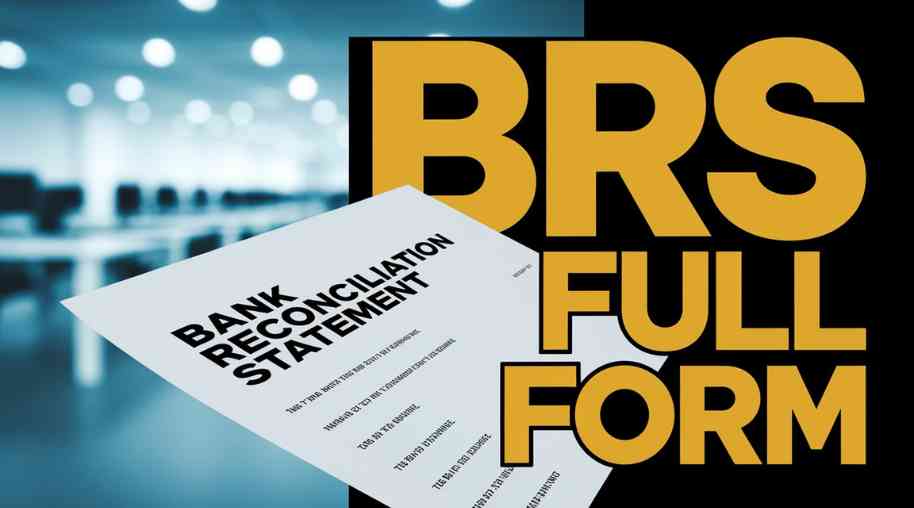CAM Full Form - Credit Appraisal Memorandum
by Shashi Gaherwar
0 2576
A Comprehensive Guide to Credit Appraisal Memorandum: Understanding Its Role and Importance
In the world of banking and financial institutions, the process of credit assessment plays a crucial role in ensuring that lending decisions are sound and based on reliable data. One of the essential tools used in this process is the Credit Appraisal Memorandum (CAM). This document serves as a critical instrument for evaluating the creditworthiness of individuals, companies, or institutions seeking loans. This article will explore the purpose, structure, and significance of a Credit Appraisal Memorandum, as well as its impact on loan approval decisions.

What is a Credit Appraisal Memorandum?
A Credit Appraisal Memorandum is a formal document created by banks or lending institutions that summarizes the detailed evaluation of a loan applicant's financial status and creditworthiness. It is part of the comprehensive process known as credit analysis, where the lender assesses the applicant’s ability to repay the loan based on various financial metrics and historical performance.
The memorandum typically includes an in-depth analysis of the applicant's financial statements, credit history, collateral value, business plan (if applicable), and other relevant factors. It aims to provide a structured and clear view of the risks and benefits associated with granting the loan.
Key Components of a Credit Appraisal Memorandum
- Applicant Details: This section includes basic information about the borrower, such as their name, business name (if applicable), address, and other identifying details. For corporate borrowers, this part also includes the company’s legal structure, ownership, and management profile.
- Loan Request and Purpose: The purpose of the loan and the amount requested are clearly stated in this section. Lenders need to understand why the applicant is seeking credit, whether it's for working capital, expansion, or specific projects.
- Financial Analysis: One of the most important sections of the CAM, it contains a detailed analysis of the applicant's financial health. This includes an examination of:
- Income Statement: To assess the profitability of the applicant.
- Balance Sheet: To evaluate the applicant's assets, liabilities, and net worth.
- Cash Flow Statement: To determine the liquidity position of the borrower and their ability to meet financial obligations.
- Debt-to-Equity Ratio: To assess the level of debt the borrower is carrying relative to their equity.
- Profitability Ratios: These ratios give insight into the borrower’s ability to generate profits and sustain operations.
- Credit History: This section assesses the applicant’s previous borrowing behavior, including their repayment history, existing debts, and past loan performance. A good credit history demonstrates reliability and trustworthiness, reducing the risk for the lender.
- Collateral and Security: If the loan is secured, the memorandum will list the assets offered as collateral. This can include real estate, machinery, or other valuable assets. The value of the collateral is critically analyzed to determine whether it sufficiently covers the loan in case of default.
- Risk Assessment: This is one of the most important parts of the memorandum, where the lender identifies potential risks associated with lending to the applicant. These risks may be financial, operational, or market-related. The assessment includes an evaluation of external factors such as market conditions, industry trends, and macroeconomic variables that could affect the borrower’s ability to repay the loan.
- Loan Terms and Conditions: Based on the risk and financial analysis, the memorandum will specify the terms and conditions of the loan. This includes the interest rate, repayment schedule, loan tenure, and any covenants or conditions that need to be fulfilled during the life of the loan.
- Recommendation: Finally, the credit analyst or loan officer provides a recommendation to either approve or decline the loan. This recommendation is based on the overall analysis, including the borrower’s financial status, risks involved, and the likelihood of loan repayment.
Importance of Credit Appraisal Memorandum
- Mitigating Risk: The primary function of a Credit Appraisal Memorandum is to mitigate the risk associated with lending. By conducting a thorough financial analysis, the memorandum ensures that the lending institution is not exposing itself to unnecessary risk by granting loans to borrowers who might struggle to repay them.
- Objective Decision-Making: The Credit Appraisal Memorandum provides a clear, objective, and standardized approach to evaluating loan applicants. It helps remove any personal biases from the decision-making process by providing all relevant data in one comprehensive document.
- Compliance and Documentation: Financial institutions must maintain proper documentation for every loan they grant, as per regulatory requirements. The Credit Appraisal Memorandum serves as a legal document that outlines the entire process of credit evaluation, ensuring compliance with banking regulations and internal policies.
- Loan Approval Process: The memorandum plays a key role in the loan approval process. Based on the findings in the CAM, senior management or the credit committee will make an informed decision about whether to approve or decline the loan application.
- Transparency and Accountability: By documenting the reasons behind each decision, the Credit Appraisal Memorandum provides transparency and accountability to the lending process. This documentation can be referred to later if there is any dispute regarding the loan approval or repayment.
How a Credit Appraisal Memorandum Affects Loan Approval
A well-prepared Credit Appraisal Memorandum can significantly influence the approval of a loan. Lenders heavily rely on the CAM to understand the risks involved in a particular loan. For instance:
- If the financial analysis shows strong profitability, stable cash flows, and low debt levels, the risk associated with the loan is minimized, making it more likely that the loan will be approved.
- On the other hand, if the memorandum highlights significant risks, such as poor credit history, low collateral value, or volatile market conditions, the loan may be declined or approved with stricter conditions.
- Additionally, the recommendation section of the CAM provides valuable insights to the decision-makers, guiding them toward a final verdict. A recommendation to approve the loan usually indicates that the borrower is financially stable and capable of repaying the loan without significant risk to the lender.
A Credit Appraisal Memorandum is an essential document in the credit analysis process, serving as the backbone of a lender’s decision-making framework. It provides an in-depth understanding of a borrower’s financial health, the risks associated with the loan, and the terms under which the loan may be granted. By systematically evaluating the creditworthiness of borrowers, the CAM ensures that financial institutions make informed and prudent lending decisions, minimizing the risk of default and promoting financial stability.
The importance of a well-drafted Credit Appraisal Memorandum cannot be overstated, as it not only ensures sound financial practices but also protects the interests of both borrowers and lenders. For banks and financial institutions, the Credit Appraisal Memorandum is indispensable in maintaining the integrity of their loan portfolios and fostering sustainable growth in their lending operations.
Further Learning Resources
If you’re passionate about building a successful blogging website, check out this helpful guide at Coding Tag – How to Start a Successful Blog. It offers practical steps and expert tips to kickstart your blogging journey!
For dedicated UPSC exam preparation, we highly recommend visiting www.iasmania.com. It offers well-structured resources, current affairs, and subject-wise notes tailored specifically for aspirants. Start your journey today!

Share:








Comments
Waiting for your comments